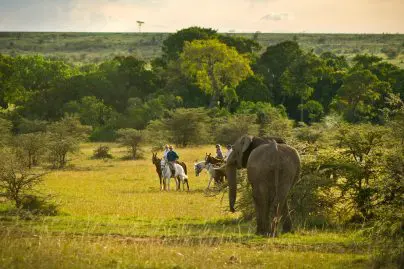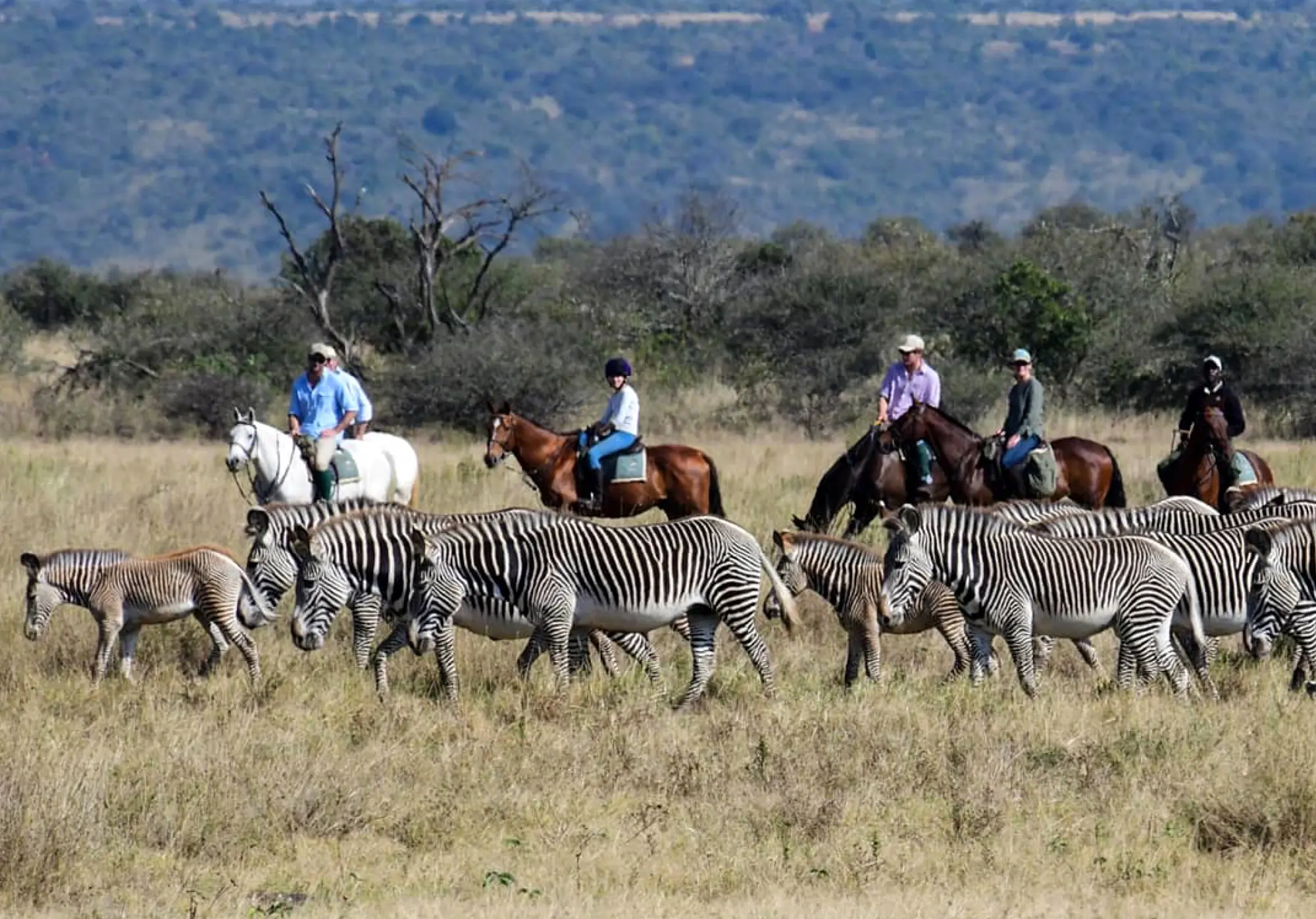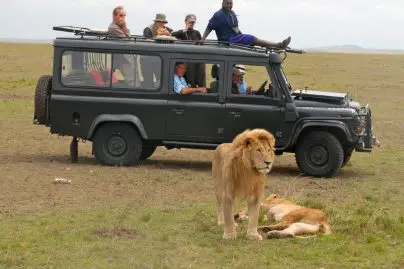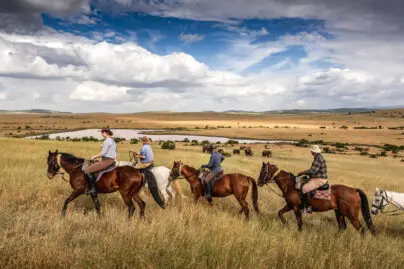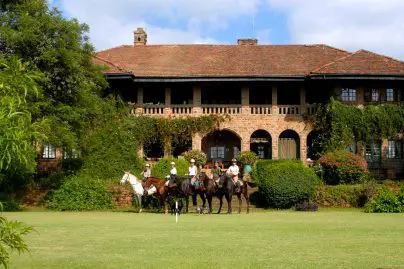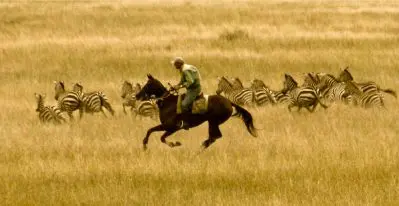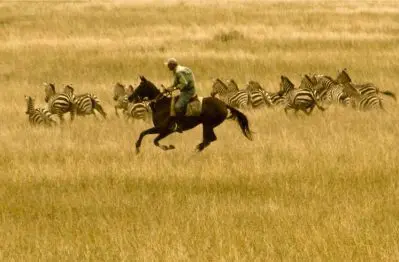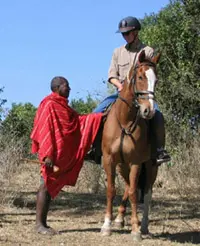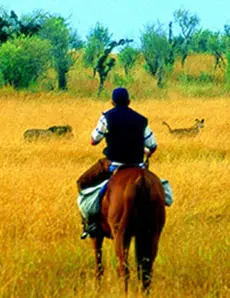Mel and Bayard Fox, founders of Equitours, began riding in the Masai Mara in 1979, taking summer guests from their Wyoming ranch. In the early years they guided the trips themselves and have been back many times. Mel was raised in East Africa, speaks fluent Swahili and is very familiar with the flora and fauna.
Kenya was the first Equitours ride overseas and remains a great favorite. Our horseback riding safaris in Kenya are without a doubt the most exciting and adventuresome of all our rides. Strong riders, confident at all paces on broken terrain while riding athletic horses will be in their element here. The opportunity to see big game and interact with wild animals on splendid horses is thrilling. Sometimes in the Masai Mara huge herds of wildebeest and zebra extend as far as the eye can see. The opportunity to see native tribesmen whose culture is dramatically different from ours in remote areas unspoiled by frequent tourist visits never fails to fascinate.
The mobile camps on all these safaris are surprisingly comfortable. The two person tents are spacious and the beds have sheets and blankets. The fresh food is well prepared and the service is excellent. Hot showers are available every evening.
One of the unforgettable memories of an African horse safari is the concert of night noises which accompany your dreams. Often you can hear the plaintiff, lilting calls of a hunting pack of hyena in the distance and sometimes the deep, vibrating roar of a lion. Most galvanizing of all is the sudden shriek of a harmless hyrax in a tree above your head. There is always the murmuring, indistinguishable background noise of myriads of birds, animals and insects which lulls one to sleep.


